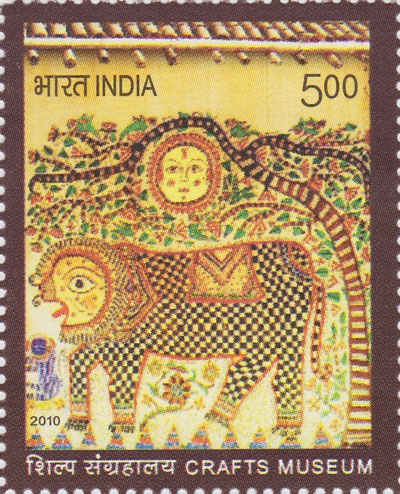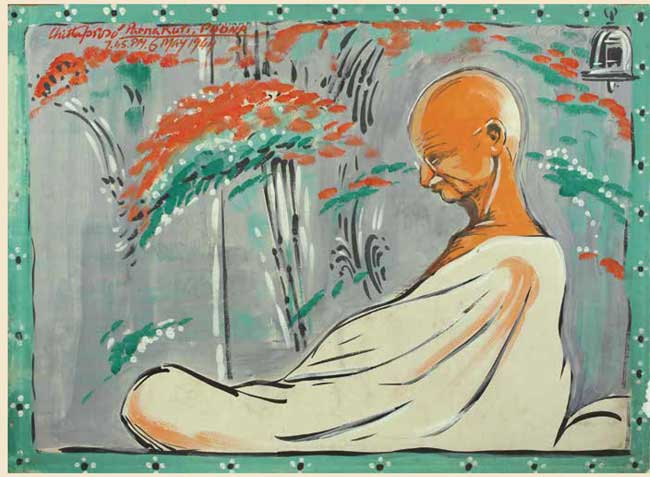
National Crafts Museum >>
The National Handicrafts and Handlooms Museum, popularly known as the National Crafts Museum & Hastkala Academy, celebrates the rich, diverse, and practising craft traditions of India. Situated in a large campus at the corner of Pragati Maidan, opposite the majestic Purana Qila, the museum was designed by the renowned architect Charles Correa | Learn more >>
Introduction
The institution of the museum, aimed at housing objects of antiquity, is of Western origin. Indians themselves did not have a tradition of setting up museums of fragmented sculptures, rusted swords and out of context painting. Broken images were immersed in holy water, worn-out objects were left to decay and merge with the very earth from which they were created. It is due to this continuous process of abandonment of the old and reproduction of the new that the tradition of craftsmanship have formidably survived in India. as archaeological museum concept in the nineteenth century, it missed out on the fact that, unlike the West, the ‘past’ and ‘present’ were not so severely divided in its case, and it therefore failed to give adequate importance in its museums to the evolving context of its culture – the living practices of rituals; festivals; weekly markets; picture-shows of itinerant storytellers; the materials, techniques and tools of artisans; the cultural changes and the attitude towards the past and the contemporary tradition as such. it is this overlooked dimension of Indian culture which is emphasised in the concept of the Crafts Museum. […]The core collection of the Crafts Museum was put together in the 1950s and’ 60z to serve as reference material for the craftsmen whose hereditary traditions were fading on the face of modern industrialization. […]
The Scales and proportions of the building are based on those of the traditional Indian village where objects of everyday life are hand made and used.
Source: National Handicrafts
Address : <http://nationalcraftsmuseum.nic.in/about_Museum.htm>
Date Visited: Sat Sep 03 2011 12:21:07 GMT+0200 (CEST)
The Collection
The Museum’s collection of about 22,000 objects, covers a range of bronze images, lamps and incense burners; ritual accessories; utensils and other items of everyday use; wood and stone carving; papier mache; ivories, dolls, toys, puppets and masks; jewellery; decorative metalware including bidri work; paintings; terracotta and cane and bamboo work. The Museum’s rare collections include carved wooden figures of the bhutas, folk deities of coastal Karnataka; tribal bronzes from Chhattisgarh; carved wooden architecture of Gujarat represented by a whole haveli (traditional house), jharokha (balcony) and a palatial facade; embroidered, beaded and printed wall hangings; saris employing techniques of brocade, ikat, jamdani and tie-and-dye. The above collection is displayed in five galleries as mentioned in the classified information. Moreover, there is a reference collection, comprising about 15,000 objects which can be used by scholars, designers, craftsmen and interested public for study and research. While brief captions provide basic information about the displayed objects, for further information the Museum’s catalogue could be consulted in the library.
Source: Home
Address : http://nationalcraftsmuseum.nic.in/museum_collection.htm
Date Visited: Sat Sep 03 2011 12:24:04 GMT+0200 (CEST)
“We shall first have to give up this hubris of considering tribes backward. Every tribe has a rich and living cultural tradition and we must respect them.” – Vice President M. Venkaiah Naidu on the constitutional obligation to respect the cultural traditions of India’s tribal communities

Gandhian social movement | Constitution | Adverse inclusion >>
“Air is free to all but if it is polluted it harms our health… Next comes water… From now on we must take up the effort to secure water. Councillors are servants of the people and we have a right to question them.” – Mohandas K. Gandhi, Ahmedabad address on 1 January 1918; quoted by his grandson, Gopalkrishna Gandhi, in “On another New Year’s Day: Mahatma Gandhi’s ‘khorak’ a 100 years ago” (The Hindu, 1 January 2018)
“The world has enough for everyone’s need but not for anyone’s greed.” – Mahatma Gandhi quoted by Medha Patkar and Baba Amte (Narmada Bachao Andolan)
Research the above issues with the help of Shodhganga: A reservoir of theses from universities all over India, made available under Open Access >>
Learn more
Crafts and visual arts | Masks
Daricha Foundation | Homepage | YouTube channel
Publishers & distributors: Books and journals on Indian tribal culture
Tips for using interactive maps
Toggle to normal view (from reader view) should the interactive map not be displayed by your tablet, smartphone or pc browser
For details and hyperlinks click on the rectangular button (left on the map’s header)
Scroll and click on one of the markers for information of special interest
Explore India’s tribal cultural heritage with the help of another interactive map >>